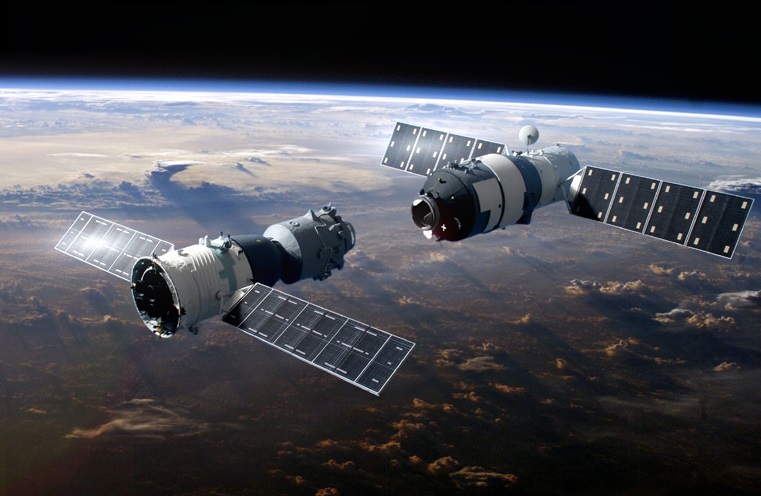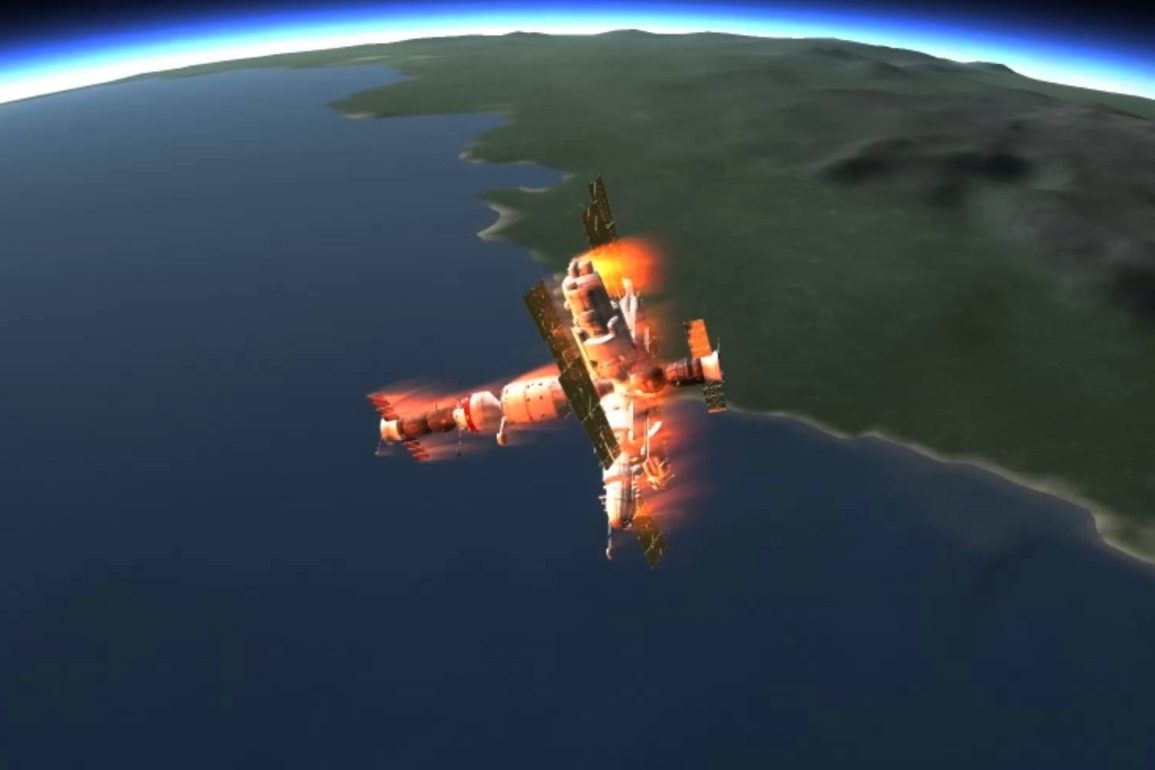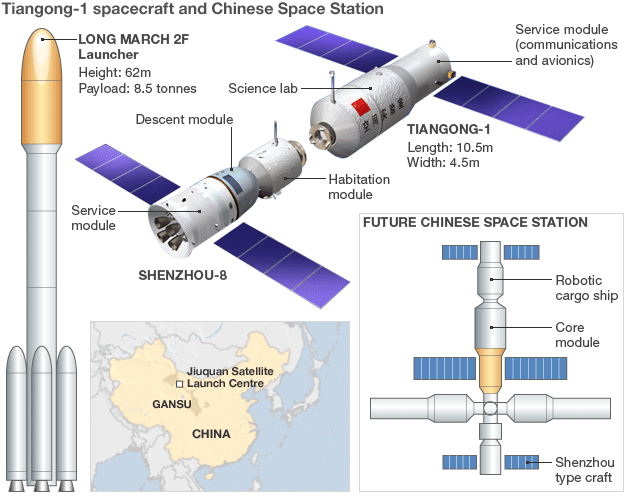Tiangong-1 launched in September 2011 by China National Space Administration was China’s first space station and it served as both manned laboratory and an experimental test-bed to demonstrate orbital tryst and docking capabilities. This 8 ton space station should have come back to earth in a controlled crash but according to some astronomer observations Tiangong has gone free-will and is hurtling towards the earth. In this period of space-age uncontrolled satellite re-entries have been common and it’s likely that falling space station will burn up upon entering the earth’s atmosphere and rain molten metal down on earth’s surface. The odds of any debris hitting someone is one in thousand.

Tiangong-1 is in low earth orbit at an altitude of about 365 km slightly lower than ISS’s (International Space Station) 400 km altitude. It is powered by 2 solar arrays and is controlled from Beijing Aerospace Flight Control Center. Having a capacity of a three member crew Tiangong-1 is equipped with exercise gear and 2 sleep stations. Interior of the spacecraft has a two-color scheme, one for ground and one for sky which helps the crew to maintain orientation in zero gravity conditions.
Since 2013 it has been in an “operational management phase”, but Thomas Dorman, an amateur astronomer told Space.com that he has been observing the movement of this Chinese space station and he believes that China has lost its control. According to him China will wait until the last minute to uncover the problem with their Space Station. He also suggested that possible cause for China halting the re-entry since 2013 when it was put into hibernation mode is it being low on fuel, and was waiting for natural descent in orbit before they could burn the engines to bring it down.

Tiangong-2 space lab is scheduled to be launched in September 2016 as a its replacement which will succor for a larger space station in line to be completed in 2023




